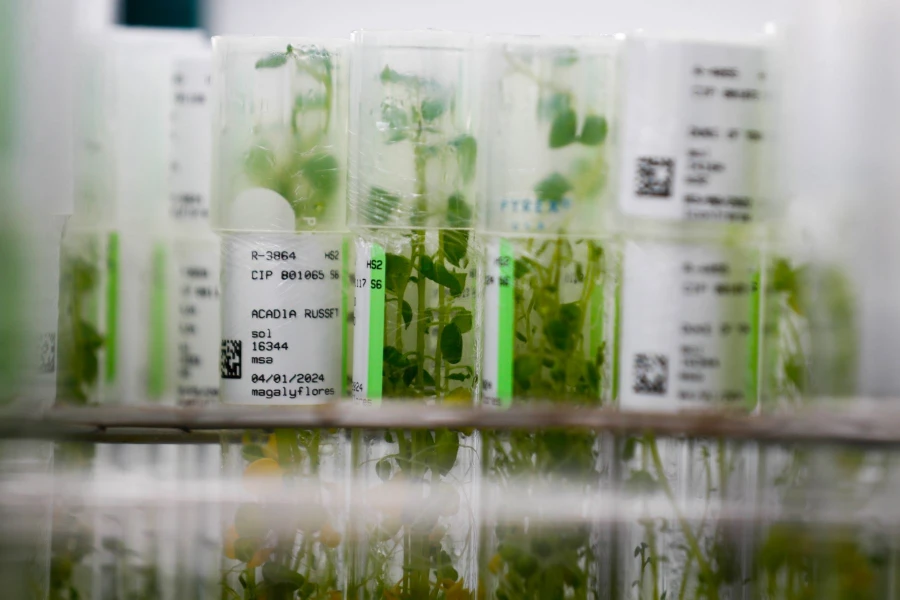New Potato Varieties Developed by CIP to Combat Anemia

After a decade of research, scientists at the International Potato Center (CIP) have developed two new potato varieties, Kallpa Yawri and Puka Yawri, which are high in iron content and have enhanced absorption capabilities in the human body. These biofortified potatoes are poised to be significant allies in combating anemia in Peru and globally.
In celebration of the first International Potato Day, the CIP showcased their efforts in preserving over 5000 potato varieties within their Germplasm Bank. This institution has been dedicated to agricultural research for more than 50 years, focusing on the development of Peru’s emblematic crop.
Gabriela Burgos, an associate scientist at CIP, explained the development process of these biofortified potatoes to Agencia Andina. The conventional breeding technique was used, involving natural crossbreeding of high-iron potatoes with those resistant to droughts, pests, and high yields. This process generated over 10,000 potato genotypes, which were evaluated in various environments. After rigorous testing and selection, 30 clones were chosen and cultivated across 11 Peruvian regions.
Don’t miss out! Subscribe to our newsletter for the latest content straight to your inbox, or register for FREE to gain full access.
These clones underwent participatory selection, involving farmers in the process. The varieties were then registered with the National Agrarian Health Service (Senasa) of Peru, meeting all regulatory requirements. The CIP is currently working on scaling seed production to ensure these fortified potatoes reach Peruvian tables and beyond.
The Kallpa Yawri variety features yellow flesh, while the Puka Yawri has white flesh with slight pigmentation. Scientific studies have shown that the iron in yellow-fleshed potatoes has a significantly higher absorption rate, reaching up to 30%, compared to other iron-rich foods like lentils and beans. Consequently, purple-fleshed potatoes were excluded from the biofortified group to ensure optimal iron absorption.
These biofortified varieties can be cultivated in diverse regions, including Huamachuco, Cajamarca, Huancavelica, Ayacucho, Puno, and Cusco. Burgos emphasized the importance of these potatoes in preventing anemia and maintaining healthy iron levels.
Pilot tests have shown successful adoption in high-anemia areas, with over 90% of families planting these varieties. The CIP is now multiplying seeds to distribute to approximately four million potato producers.
Burgos highlighted that genetic modification was not necessary for this development. Instead, the biodiversity within CIP’s Germplasm Bank, which houses 5014 cultivated and 2638 wild potato varieties, was utilized. This approach ensures that the new potatoes are developed through conventional breeding, maintaining natural genetic integrity.
The CIP Germplasm Bank employs various preservation techniques to ensure the long-term availability of potato varieties. These include in vitro conservation, tuber multiplication, and cryopreservation at -196°C, ensuring that future generations can access these vital resources.
In addition to these developments, the CIP is integrating artificial intelligence to monitor potato varieties. The VarScout application, which identifies potato varieties through images, and an AI-powered chatbot in collaboration with Amazon, are being developed to streamline research processes.


Responses